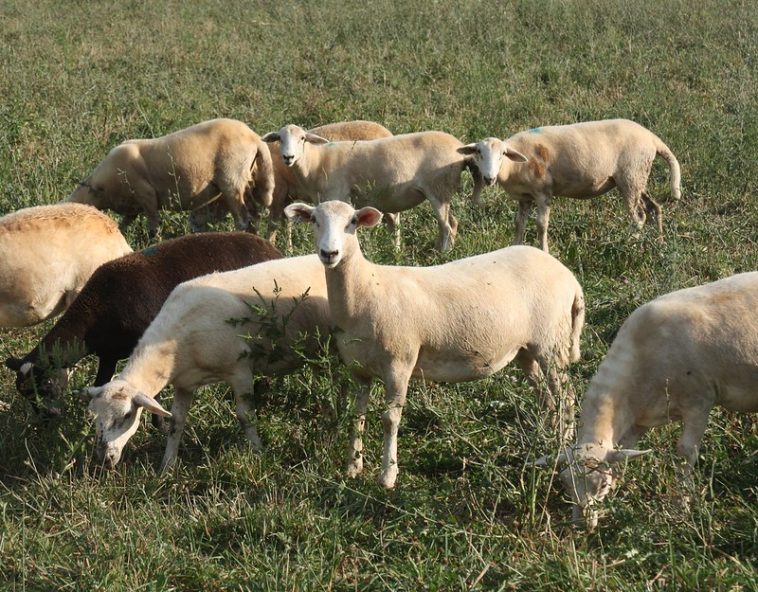Investing in proper nutrition for pregnant and lactating ewes saves both time and money in the long run. Ewes in good body condition prior to lambing have healthier lambs and fewer complications than underweight or overweight ewes. As 70% of foetal lamb growth occurs in the last five weeks of pregnancy, it is important to increase feed for ewes at this time.
Nutrient requirements
Sheep and lambs should be fed according to their nutrient requirements. Nutrient requirements vary by breed, genetics, sex, age, size (weight), stage and level of production. Higher performing sheep have higher nutritional requirements.
A sheep’s nutrient requirements to maintain are the quantity of nutrients it must consume daily to neither gain nor lose body weight. A sheep that is not pregnant or nursing lambs does not have very high nutritional requirements.
Early to mid-gestation
An ewe’s nutritional requirements during early and mid-gestation are slightly higher to maintain. While lower quality feed can be fed during this period, inadequate nutrition can have an effect on embryo implantation. Prolonged poor nutrition can also affect placenta growth, which can have lasting repercussions.
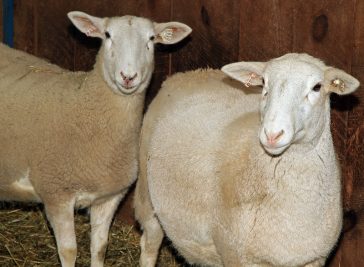
Pregnant ewe lambs (source: flickr.com)
Late gestation
An ewe’s nutritional requirements increase substantially during late gestation, especially if the ewe is carrying multiple foetuses. This is because approximately 70 percent of foetal growth occurs during the last four to six weeks of pregnancy. Adequate nutrition is also necessary to increase ewe condition to ensure adequate milk production. Nutrition during the last two weeks is especially important.
While ewes and lambs can survive at lower feeding levels, inadequate nutrition can result in pregnancy disease, lighter lambs at birth, increased postnatal losses, and a reduction of mothering ability and milk production. An ewe’s requirements for calcium also increase during late gestation.
After lambing, it is essential for ewes to have enough nutrients to produce milk for their lambs. Lambs rely on their mother for their nutritional needs. Underfed ewes have lambs with lower birth weights. Compared to lambs with healthy birth weights, lambs with low birth weight:
- are weaker
- have lower survival rates
- are at greater risk for disease
- have slower growth rates
Producing lambs, and subsequently milk to feed those lambs, is energetically expensive for ewes. Underfed and underweight ewes:
- are likely to have complicated deliveries
- cannot produce enough milk to support their lambs
- may not produce high-quality, nutrient-dense milk
- are at risk for pregnancy toxaemia and milk fever
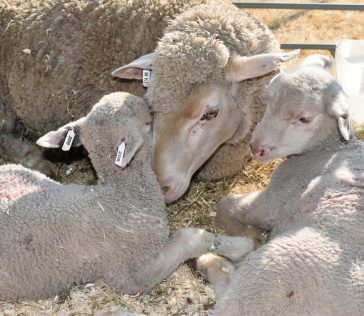
Ewe nursing twins (source: flickr.com)
All these factors result in added costs or financial losses. For example, supplementing with milk replacer can be expensive, and grafting an underfed lamb to another ewe is time consuming. Feeding ewes properly can prevent this.
A healthy, well-fed ewe will produce enough milk to feed her lambs. Ewes with multiple lambs will naturally produce more milk in response to the stimulus of suckling lambs. An ewe nursing twins will produce anywhere from 30 to 50% more milk than an ewe with a single lamb. Intuitively, an ewe nursing multiple lambs will need more energy — more calories — than an ewe feeding a single lamb.
In addition to their feed, ewes rely on their body condition (fat stores) for the energy needed to produce milk, especially in early milk production. The initial energy demand of milk production is so great, the ewe cannot consume enough to keep up. It is not unusual for an ewe to lose weight, especially when feeding multiple lambs; however, it is important that the ewe must easily recover condition after weaning. A loss in body condition score of more than 0,5 to 1 is a cause for concern. Conversely, if an ewe does not lose weight, it may be an indicator of poor milk production or quality. Monitor the growth of her lambs and be prepared to supplement if necessary.
Lactation
An ewe’s nutritional requirements are the highest during lactation, especially if the ewe is nursing multiple offspring.
What does a lactating ewe need?
Unlimited access to clean, fresh water: Milk is approximately 85% water, by volume. A lactating ewe may consume twice as much water as dry ewes!
Energy: Demand for energy increases by 30%. Early spring grasses are likely in too short supply to sustain the energy needs of lactating ewes. Supplement with quality hay until the pasture is established enough to meet the needs of ewes.
Protein: Demand increases by up to 55%. Grain should be increased to provide substantial protein. A general rule is to add 500 grams of feed per lamb per day, although this quantity varies considerably between breeds and with the quality of hay provided.
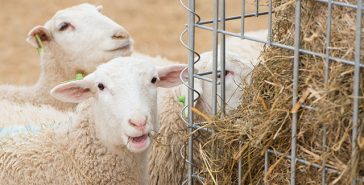
Pregnant ewes shown eating hay from a feeder (source: flickr.com)
Minerals and vitamins are also critical in preventing diseases associated with lambing.
Calcium: It is essential for a number of physiological processes, but is especially critical in milk production. Ewes with insufficient dietary calcium, or an inability to utilise available calcium, will suffer from hypocalcaemia, more commonly called milk fever. Milk fever can lead to death.
Selenium: Many soils in Africa are deficient in selenium, and feeds contain supplemental selenium to prevent white muscle disease in lambs. White muscle disease is a nutritional muscular dystrophy, or degeneration of the skeletal and cardiac muscles of lambs, and can also cause death.
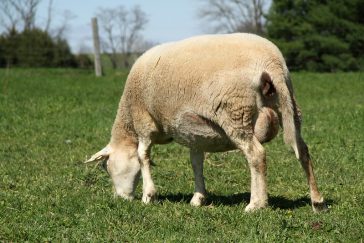
Ewe 24 hours from lambing (source: flickr.com)
Feeding lambs
There are many ways to manage and feed lambs for market. If maximum
gains are the objective, concentrate feeding is common. Pasture-reared lambs will gain more weight and be less susceptible to worm infections if they are supplemented with some sort of feed.
Nutrient requirements for lambs will vary according to the age of lambs and their genetic potential for growth. Frame size is used as an indicator for growth potential.
Ewe lambs
Nutrient requirements are higher for replacement ewes and ram lambs than for physiologically mature animals. This is because lambs and yearlings are still growing in addition to other production functions. It is
especially important that the nutritional requirements of ewe lambs are met. Ideally, ewe lambs should be fed and managed separately from mature
females until they are bred for the second time.
Another important note: Rapid changes in diet can disrupt the microbiome in the ruminant digestive system. Gradually introduce changes in diet in order to prevent additional complications.
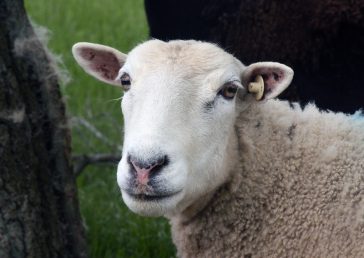
We thank the ARC Institute for Agricultural Engineering in South Africa who made their manual on sheep production and facilities available to the readers of ProagriMedia.

